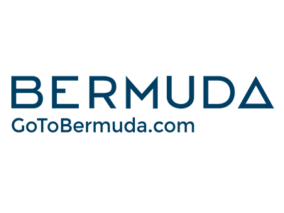Photo Chris Burville
How often have you thought the other boat experienced ‘lucky’ weather?
The Bermuda Race Organizing Committee (BROC) is proud to announce that the 2024 race will be the first Ocean Race to use Forecast - Time Correction Factor (F-TCF) as a scoring model. The intention to use F-TCF scoring was communicated in the 2024 NOR published in June (now amended), and we are sharing additional details about this innovative scoring method.
The BROC is always considering opportunities to improve the fairness of our race and a major target for improvement has been the scoring method. After careful consideration and analysis, the BROC is confident that F-TCF offers a substantial improvement in fairness and clarity over the previously used method, Performance Curve Scoring (PCS).
What is F-TCF and how does it work?
- Hours before the start of the race, a predicted elapsed time to finish for every boat will be determined using timely weather and current grib files and each boat’s polar file to determine the optimized route using Expedition.
- Within each division, a forecast - time correction factor (F-TCF) will be calculated for each boat. The F-TCF is the ratio of a scratch boat’s predicted elapsed time to complete the course, to the predicted elapsed time of each boat in the division.
- The F-TCF for every boat will be communicated to the fleet the morning of the race.
- The corrected finish time for any boat can be calculated by multiplying the F-TCF for a boat by the actual elapsed time (plus any penalties) for that boat.
- A rank order of corrected finish times by class and division will determine the order of finish for each class and division.
Why is F-TCF expected to be fairer than the previous method?
The previous scoring method, PCS uses a table of possible ratings for each boat based on historical statistical wind speeds and directions for the Newport – Bermuda course. An imputed average wind speed over the course is determined from a scratch boat’s finish time. In short, the PCS method uses historical wind speed data, and assumes a uniform course for the entire fleet, but actual conditions vary widely from the historical average, and conditions are never uniform across the fleet.
The F-TCF method is inherently fairer because the actual conditions during the race will be more similar to a forecast generated just before the race, than to historical average conditions for the course.
Disruptive weather systems that variably affect different parts of the fleet are not accounted for using PCS. This often results in ‘lucky’ weather patterns that favor or disfavor boats in particular performance bands. For example, a ridge develops 150 miles from Bermuda and the fast half of the fleet becomes ‘parked’ there for a period of time while the slow half of the fleet catches up, and then wind fills in. In this example the slow boats were ‘lucky’.
Since F-TCF uses the forecast for the racecourse and each boat’s expected route and speed, boats that are predicted to be impacted by a disruption will have a predicted elapsed time and corresponding F-TCF that accounts for this impact.
Another benefit of the F-TCF method is that a rating for every boat will be determined and communicated in advance of the race. Every boat will be able to determine how much time it owes or is owed by every other boat in its class and division at any time during the race.
The PCS rating value used to calculate the corrected time was determined after the fact. Therefore, a boat’s rating for scoring purposes was not known until after the finish, making it challenging for competitors and spectators to understand relative corrected positions during the race.
Further important details about the implementation of F-TCF for the 2024 Newport Bermuda Race will be included in the Sailing Instructions published in the spring. A list of Frequently Asked Questions about F-TCF is available on Bermudarace.com.
Note from the Race Chair:
I want to thank Stan Honey and the USSailing Offshore office led by BROC member Jim Teeters for conceiving of and refining this innovative scoring method. We are grateful for the time, wisdom, and resources they have dedicated to ensuring that this scoring method will deliver the improvements in fairness, transparency, and spectator appreciation that competitors expect. The Bermuda Race has always been in the vanguard of Offshore Races, and we are proud to be the first to bring this innovative scoring method to the offshore racing community.
Please don’t hesitate to contact us with any questions. We will be periodically publishing answers to further questions on our website.
Andrew Kallfelz
2024 Bermuda Race Chair
[email protected]
Frequently Asked Questions: Forecast – Time Correction Factor
These are also published on our FAQ page.
| Order | Question Category | Question | Answer | More information |
|---|---|---|---|---|
| 66 | Scoring: Forecast – Time Correction Factor | What forecast models (gribs) will be used to generate the optimal route and predicted time for each boat, and will these details be available to competitors? | The specific weather models used will be detailed in the Sailing Instructions. Likely, NOAA GFS and HRRR will be used for wind forecasts and the NOAA RTOFS Gulf Stream Model will be used for currents. The specific grib files, including the model run time will be made available to competitors before the start of the race. | |
| 67 | Scoring: Forecast – Time Correction Factor | When will the forecast elapsed times and F-TCFs be determined by the RC? | Timing of the F-TCF simulations will be detailed in the Sailing Instructions. Ideally, to optimize accuracy, the F-TCF simulations and calculations will occur in the few hours preceding the start, and the fleet will be notifited a few hours before the race. | |
| 68 | Scoring: Forecast – Time Correction Factor | How and when will the F-TCF values be communicated to the fleet? | Distribution of F-TCF ratings for the fleet will be explained in the Sailing Instructions. Currently, as soon as F-TCFs have been determined for the fleet, the Race Office is expected to email the F-TCF ratings in common file formats to all PIC’s and Entrants, as well as provide via email and SMS a link to downloadable files. | |
| 69 | Scoring: Forecast – Time Correction Factor | How will the ‘scratch boat’ be selected and does it matter? | The Race Committee will select a ‘scratch boat’ for each division. Mathematically any boat can be selected as the scratch boat, and that boat will have a F-TCF of 1. The F-TCF for all other boats will be calculated as a ratio of the predicted elapsed time of the scratch boat to their predicted elapsed time. The ranking of corrected times of any boat will be identical, regardless of which boat is selected as the scratch boat. | |
| 70 | Scoring: Forecast – Time Correction Factor | Will the F-TCF be used to set or adjust class groupings? | No. The F-TCF is only used to calculate corrected times. Class groupings will be decided by the Race Committee well before F-TCF values are calculated and will not be adjusted after F-TCF values are generated. Class groupings are determined by the Race Committee based on several factors, none of which are the F-TCF value. | |
| 71 | Scoring: Forecast – Time Correction Factor | Forecasts are not perfect either, so how/why is this approach fairer than PCS? | Indeed, forecasts are never perfect, but they are much closer to actual conditions (over the 3-5 day forecast period) than the statistical course weather assumed by PCS or other GPH ratings. | |
| 72 | Scoring: Forecast – Time Correction Factor | Is there an example of how a F-TCF is calculated based on the predicted elapsed time from the optimal route? | The predicted elapsed time (PET) for boats Apple, Banana and Clementine are determined to be: Apple = 103hrs Banana = 110hrs Clementine = 124hrs The F-TCF value for any boat is: PET (scratch) / PET (any boat). Banana is selected as the scratch boat. F-TCF (Apple) = PET (Banana) / PET (Apple) = 110 / 103 = 1.068 F-TCF (Banana) = PET (Banana) / PET (Banana) = 110 / 110 = 1.0 F-TCF (Clementine) = PET (Banana) / PET (Clementine) = 110 / 124 = 0.887 To calculate a corrected elapsed time, multiply the actual elapsed time for any boat by the F-TCF for that boat. Boat / Actual elapsed time / F-TCF / Corrected elapsed time / Order: Apple / 120hr / 1.068 / 128.16hrs / 3 Banana / 118hr / 1.000 / 118.00hrs / 2 Clementine/ 130hr / 0.887/ 115.31hrs/ 1 |
|
| 73 | Scoring: Forecast – Time Correction Factor | Who is performing the optimized routing and F-TCF calculations for the fleet prior to the start of the race? | The USSailing Offshore office has been contracted by the BROC to provide the F-TCF calculations for the Race. The USSailing Offshore office expects to offer this service to other offshore races that would like to use the F-TCF scoring method in the future. |


































